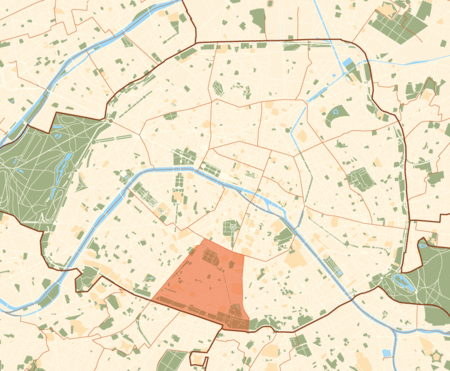14th arrondissement of Paris

The 14th arrondissement of Paris (French: XIVe arrondissement [katɔʁzjɛm aʁɔ̃dismɑ̃]), officially named arrondissement de l'Observatoire (IPA: [aʁɔ̃dismɑ̃ də lɔpsɛʁvatwaʁ]; meaning "arrondissement of the Observatory", after the Paris Observatory), is one of the 20 arrondissements of the capital city of France. It is situated on the left bank of the River Seine and contains most of the Montparnasse district. Although today Montparnasse is best known for its skyscraper, the Tour Montparnasse, and its major railway terminus, the Gare Montparnasse, these are both actually located in the neighboring 15th arrondissement. The district has traditionally been home to many artists as well as a Breton community, arrived at the beginning of the 20th century upon the creation of the Montparnasse railway terminus. Universities located in the 14th arrondissement also include the Cité Internationale Universitaire de Paris, which is located near the Parc Montsouris, the Stade Charléty and the catacombs; and the Paris School of Economics.
Excerpt from the Wikipedia article 14th arrondissement of Paris (License: CC BY-SA 3.0, Authors, Images).14th arrondissement of Paris
Rue Charles Divry, Paris Paris (Paris)
Geographical coordinates (GPS) Address Website Nearby Places Show on map
Geographical coordinates (GPS)
| Latitude | Longitude |
|---|---|
| N 48.833055555556 ° | E 2.3269444444444 ° |
Address
Mairie du 14e arrondissement (Mairie du XIVème; Mairie du 14ème)
Rue Charles Divry
75014 Paris, Paris (Paris)
Ile-de-France, France
Open on Google Maps









